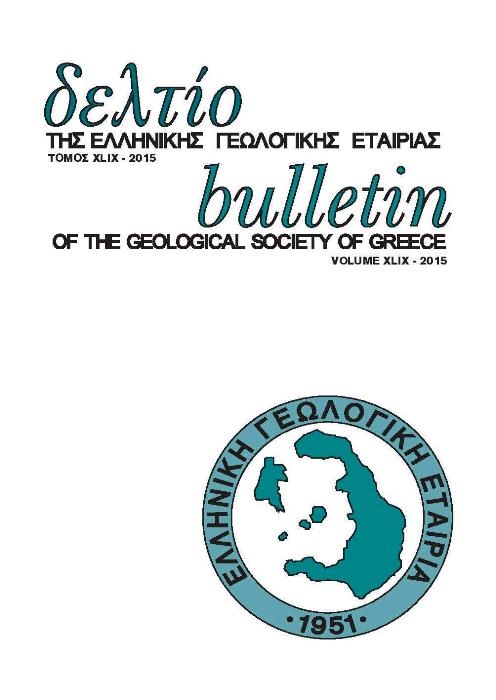Foraminiferal biostratigraphy and palaeoenviron- mental analysis of the basal part of Kalamavka formation (Late Miocene, Ierapetra Basin, Eastern Crete)

Abstract
This work involves a preliminary quantitative analysis of benthic foraminifera for the purpose of the determination of palaeoenvironmental parameters (oxygenation, palaeobathymetry) of the depositional environment of the lower part of the typical section of Kalamavka Formation, in Ierapetra Basin, eastern Crete. The sediments of the studied section contain a rich foraminiferal fauna, mainly dominated by planktonic species. High resolution planktonic foraminiferal record reveals the presence of N. atlantica praeatlantica, N. acostaensis, P. siakensis suggesting an early Tortonian chronostratigraphic age. The quantitative assessment of palaeodepth, suggests deposition at middle shelf to bathyal water depths with moderate organic matter fluxes and elevated oxygen contents of the bottom water, typical for this water depth interval.
Article Details
- How to Cite
-
Drinia, H., Antonarakou, A., & Louvari, M. A. (2013). Foraminiferal biostratigraphy and palaeoenviron- mental analysis of the basal part of Kalamavka formation (Late Miocene, Ierapetra Basin, Eastern Crete). Bulletin of the Geological Society of Greece, 47(1), 102–111. https://doi.org/10.12681/bgsg.10908
- Section
- Palaeontology, Stratigraphy and Sedimentology

This work is licensed under a Creative Commons Attribution-NonCommercial 4.0 International License.
Authors who publish with this journal agree to the following terms:
Authors retain copyright and grant the journal right of first publication with the work simultaneously licensed under a Creative Commons Attribution Non-Commercial License that allows others to share the work with an acknowledgement of the work's authorship and initial publication in this journal.
Authors are able to enter into separate, additional contractual arrangements for the non-exclusive distribution of the journal's published version of the work (e.g. post it to an institutional repository or publish it in a book), with an acknowledgement of its initial publication in this journal. Authors are permitted and encouraged to post their work online (preferably in institutional repositories or on their website) prior to and during the submission process, as it can lead to productive exchanges, as well as earlier and greater citation of published work.







